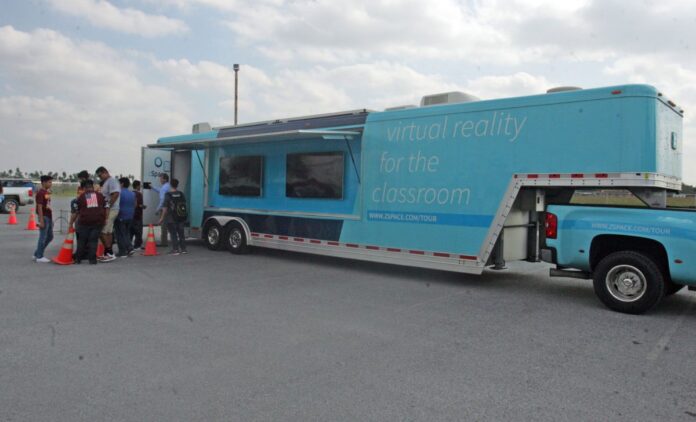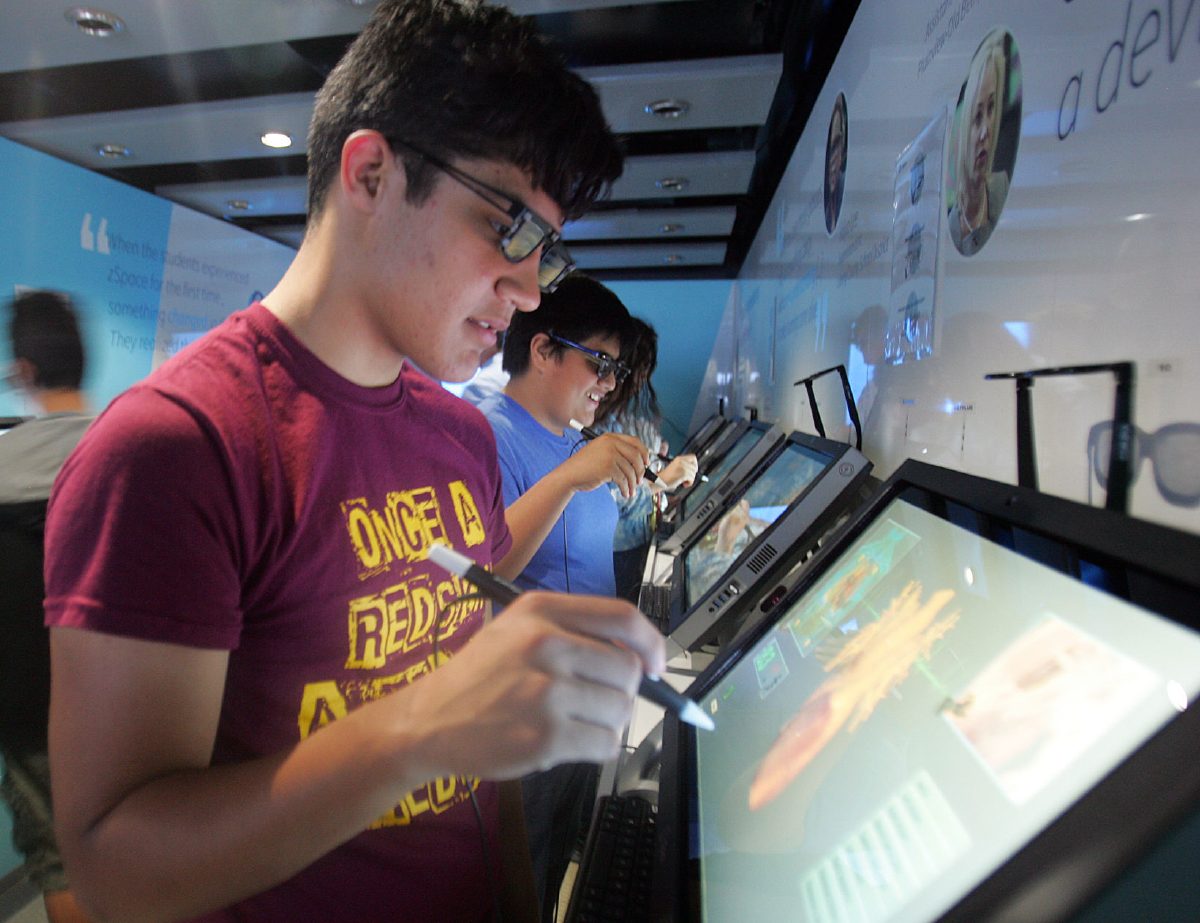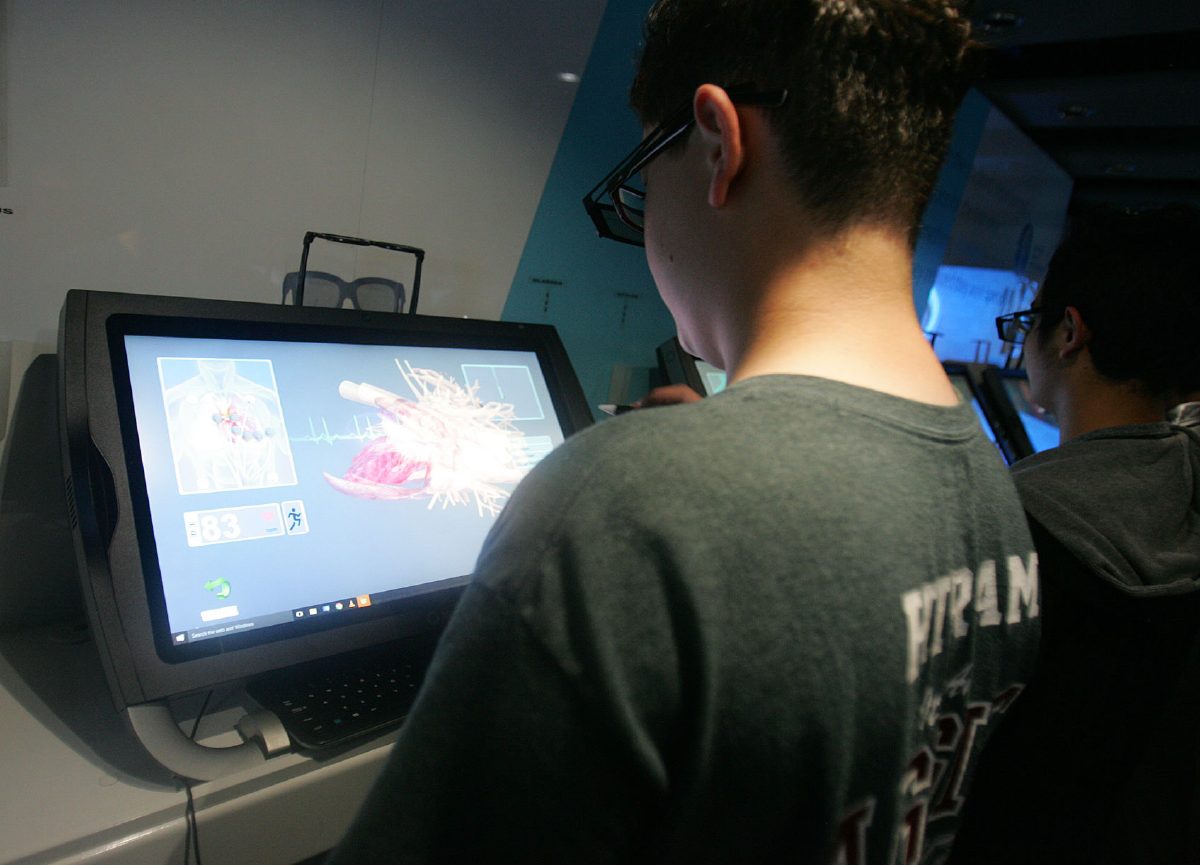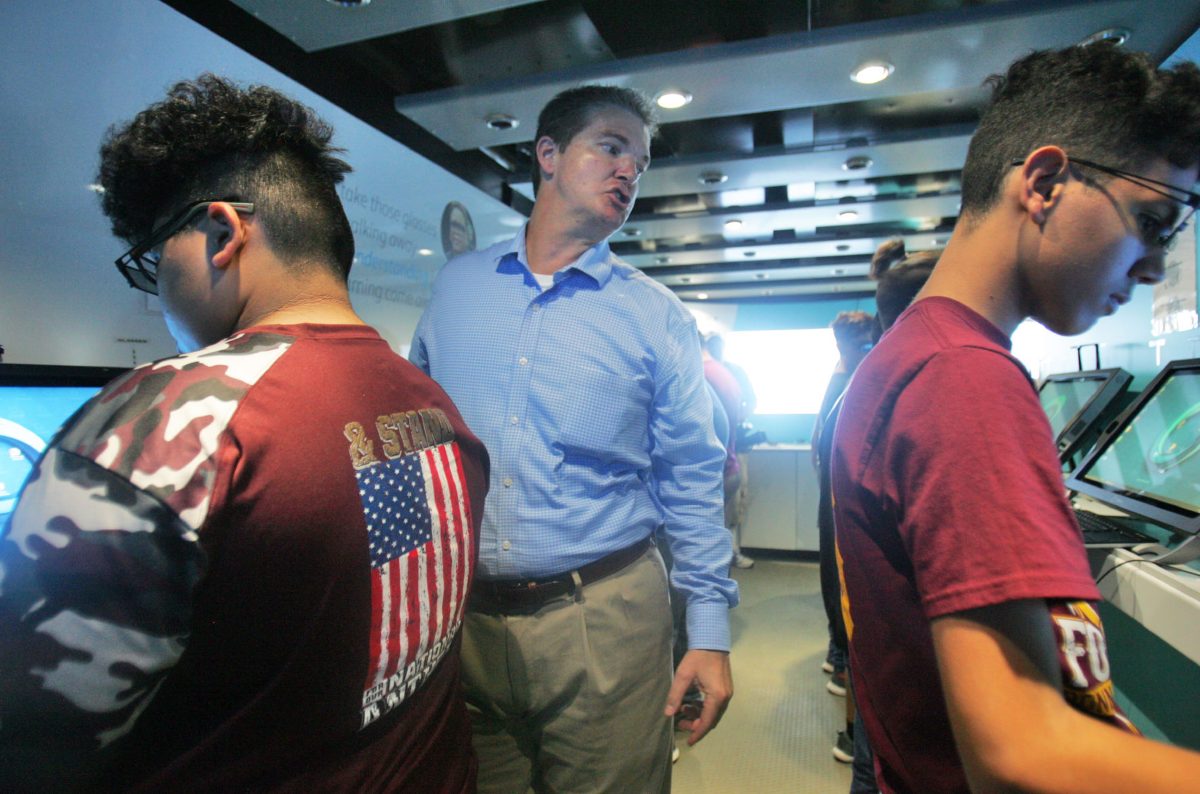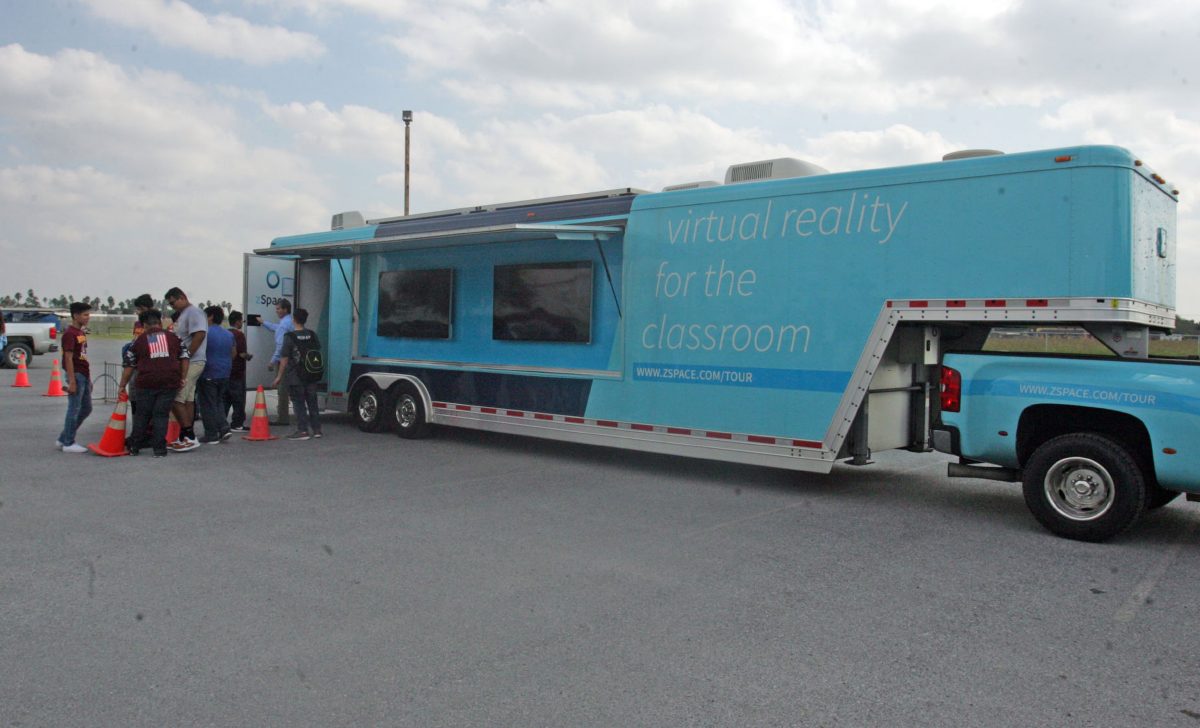DONNA — Students at Donna High School peeked inside a human heart while aboard a mobile classroom fitted with virtual reality capabilities on Friday.
DONNA — Students at Donna High School peeked inside a human heart while aboard a mobile classroom fitted with virtual reality capabilities on Friday.
The zSpace classroom on wheels was stationed at both high schools in Donna, allowing students and teachers a chance to use the virtual reality and augmented reality software.
Ruby Giron, a freshman at Donna High School, was in awe when she used a stylus to enlarge the image of the human heart, giving her the ability to see its blood vessels and ventricles.
She then worked with the ViziTech software’s camera tool to peek into the heart’s aorta, giving her the ability to see the valve in what seemed like inches in front of her face.
“It was like 3-D,” Giron said. “You could pick up the (heart), and move it closer (to you).”
The mobile classroom stopped by the campuses as part of a free tour in an effort to promote the educational tool for purchase by the district.
Currently, the Brownsville school district and the University of Texas Rio Grande Valley use the software and equipment.
A typical lab could cost a district approximately $20,000, but the price varies depending on the number of stations and software purchased, according to Claire Vartabedian, a spokeswoman for the company.
“It was weird but cool,” Giron said.
Giron’s biology teacher Erik Moreno was inside the mobile classroom when his students’ virtually dissected whales and dolphins for the first time.
“Oh my goodness!” one student shouted during a quick tutorial of the software’s microbiology feature.
Life science, physical science, history and geography subjects are available on the software.
“They’re really engaged,” Moreno said. “One big distraction in the classroom is cellphones. I haven’t seen a single student looking at (their) cellphones.”
Moreno, who has used a 3-D printer in the classroom, said he liked the ability to download a PDF of students’ work from the software.
“You gotta admit, this was better than just a textbook,” said Joe Hutcheson, a former district administrator who now works for the company that supplies the software.
Hutcheson, who worked in education for 25 years, instructed the mobile classroom, showing students the human heart, an actual MRI of a knee and human cells.
“We really wanted to expose the students to, not what the future (of technology) is,” Hutcheson said, “this is today.”

